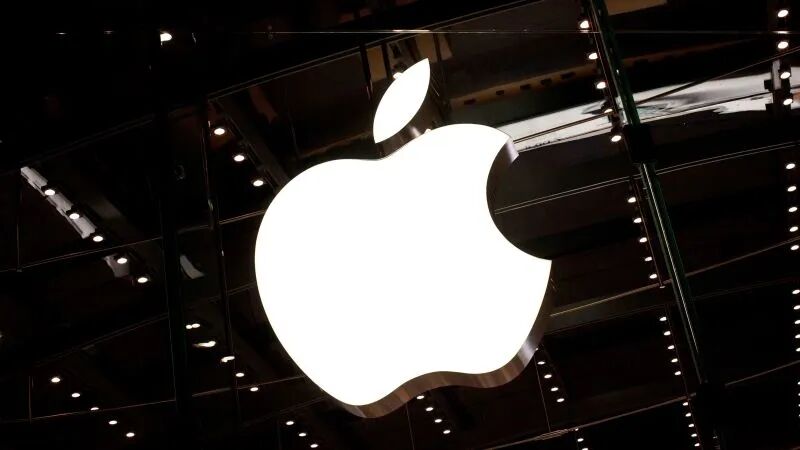Preview of Apple's 2025 Fall Product Launch Event: These Investment Signals You Should Know Now
Another year's autumn wind is blowing, and it's time for Apple to "reap" again!
Apple has announced that it will hold its annual fall product launch event at its headquarters at 10 a.m. Pacific Time on September 9th (1 a.m. Beijing Time on the 10th). The theme of the event is "Awe dropping."
As the launch event draws closer, rumors about the iPhone 17 and Apple Watch are spreading like wildfire.
But for investors, while the market is still discussing new color options and complaining about the shape of the camera, we must see through the changes in the supply chain behind every millimeter of thickness change and the ecological strategies behind every new feature.
Today, this article won't talk about specifications. Instead, it will focus on the signals.
Based on the recent discussions of its Silicon Valley expert team about the Apple launch event, Silicon Rabbit will talk about the supply chain signals, profit signals, and strategic signals that truly affect the valuation model.
01
The core keyword for this year's iPhone is just one word: thin.
First, there's the newly added iPhone 17 Air. It is rumored to be only 5.5 - 6.25 millimeters thick, which will make it the thinnest iPhone in Apple's history!
This is not simply about making the components smaller. It means a comprehensive innovation in materials science, structural stacking, and heat dissipation solutions.
And the questions that investors should focus on are:
What price did Apple pay to achieve this "extremely thin" design? And what did it gain?
Behind this, it may mean a new motherboard stacking technology, a more aggressive heat dissipation solution, or even a minor breakthrough in battery technology.
Each "minor breakthrough" corresponds to the rise of one manufacturer in the supply chain and the decline of another.
Whoever gets into this new supply chain will see their financial reports improve first.
Meanwhile, its market performance will directly determine Apple's profit forecast for the next fiscal year.
Second, there's the imaging "arms race" in the Pro series.
The iPhone 17 Pro and Pro Max are said to have their telephoto lenses upgraded to an unprecedented 48-megapixel resolution and feature a new "pill-shaped" rear camera module.
Don't underestimate this change.
Higher pixel counts and more complex structures place more stringent requirements on lenses, sensors, and motors.
For the secondary market, every millimeter of thickness change may correspond to a revaluation of tens of billions of market value in the industrial chain.
Behind this is a "Game of Thrones" among optical industry leaders. Whoever has their technology route selected by Apple will have the growth script for the next two years.
02
If the iPhone is Apple's "money tree."
Then wearable devices are its "growth flywheel" pointing towards the future.
The first highlight this year is the "satellite killer feature" of the Apple Watch Ultra 3.
The watch can send a distress signal even in the signal-free wilderness. This feature is worth the price of admission after just one use.
This sounds cool, but behind it is Apple's precise strike on the professional outdoor sports market.
This feature directly targets the core territory of traditional giants like Garmin.
The addition of one feature may trigger a revaluation of a vertical market.
Even more imaginative is the "health ambition" of the AirPods Pro 3.
It is rumored that it will be the first to feature an in-ear heart rate tracking function. This is an extremely important signal.
When the earbuds can not only play music but also continuously track your health data, they transform from a "consumer electronic device" into a "health terminal."
Apple's ambition has never been limited to hardware. What it really wants to do is to use hardware to capture the market and monetize through services and data.
When the earbuds can continuously monitor your health data, a new subscription-based health service business model will have a foundation.
Conclusion
Well, up to this point, we've identified several potential investment directions:
New materials and precision manufacturing behind the thinner iPhone.
The optical industrial chain driven by camera upgrades.
Wearable devices entering the professional sports and big health markets.
But a deeper question lies before us:
Public rumors and the launch event PPT can only tell us "What" (what there is). They can't answer the more crucial "Why" and "How":
What are the core considerations behind Apple's choice of this technology route?
What are the yield rate and cost curve of this new technology? How will this affect the gross profit margin?
Can its real user experience really support a new business model?
These are the keys to building a high-confidence investment model.
While everyone is staring at the launch event PPT, smart capital has already been looking for the people behind the PPT.
When your team is arguing about the technology route, when your investment decision is pending, when your product strategy is in the fog... Remember, the confusion you're facing may be the journey that some experts have already overcome. We at Silicon Rabbit believe that real first-hand experience always comes from the people who are driving the industry transformation.
Silicon Rabbit has more than 30,000 executives from leading Silicon Valley companies, core technology experts, well-known university professors, and entrepreneurs. They not only have in-depth industry experience but are also deeply involved in industry transformation and have fresh and credible first-hand insights.
This article is from the WeChat official account “Silicon Rabbit” (ID: gh_1faae33d0655). The author is Silicon Rabbit. It is published by 36Kr with authorization.





